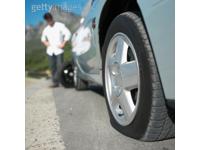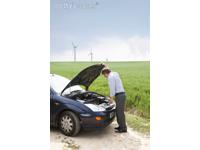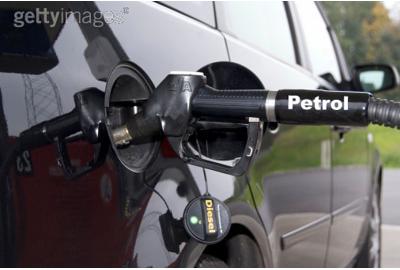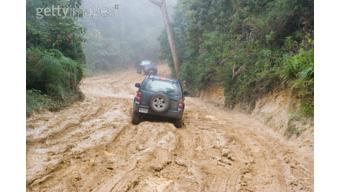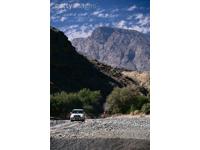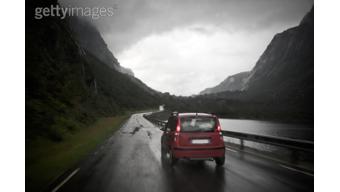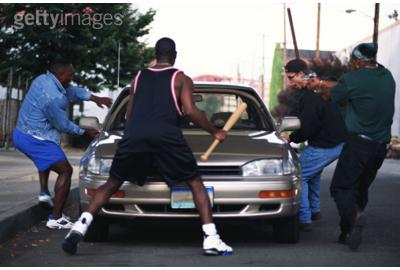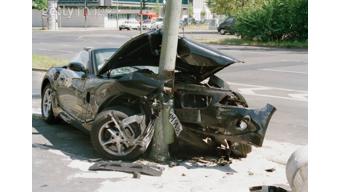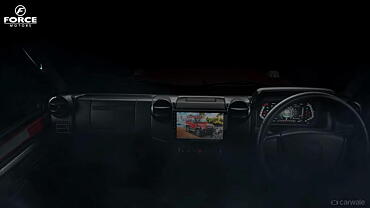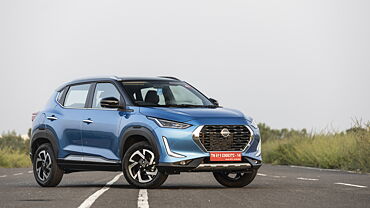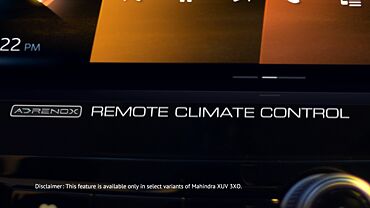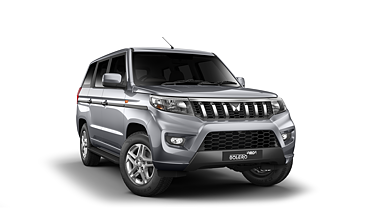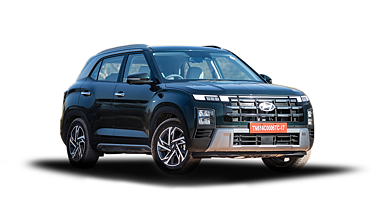Emergency Auto Guide
CarTrade.com's Auto Guide section consists of articles which are helpful to every individual in maintaining his/her vehicle. The Auto Guide covers topics such as general maintenance of cars, car care during monsoon and explaining the functioning of different mechanical and electrical parts in a car.
These articles also work as a guide, which one can religiously follow in the ownership cycle of their vehicle. A very important aspect of ownership is the maintenance of vehicles, which can be further divided into preventive maintenance and breakdown maintenance.
Preventive maintenance concentrates on the timely scheduled maintenance of the vehicle by performing all the necessary checks like checking tyre pressure, checking and replacing the engine oil, gear oil etc, checking electrical connections and suspensions.
Another type of maintenance is the breakdown maintenance, which deals with post breakdown activity such as oil leakage, suspension failure, tyre burst etc. In today’s article we shall focus on all emergency situations that could arise due to unforeseen circumstances and some guidelines you the car owner might consider useful.
We have enlisted ten emergency situations and the methods of dealing with it.
1. Tyre Puncture/Burst.
2. Mechanical failure.
3. Electical problems such as ignition, lights not working etc.
4. Improper fuel filling.
5. Vehicle underbody hits a large stone on road
6. Fire inside engine compartment or in cabin
7. Vehicle driven on off road conditions.
8. Driving in stormy weather conditions
9. Planned attack by gang
10. Vehicle meets with an accident
1. Tyre Puncture/Burst.
The most unexpected obstacle while going on any trip or on urgent travel is tyre puncture. Puncture of a single tyre can be considered as minor and puncture of multiple tyres or bursting of a tyre would come under a major type of puncture.
If the car has conventional tube tyres then a piercing object would result in a flat tyre and immediately the steering would start wobbling, in this case the vehicle has to be parked on the safe side of the road and the punctured tyre has to be replaced with the spare tyre. While replacing the punctured tyre, make sure the vehicle is parked properly off the road and is in no way an obstacle for the oncoming vehicles, switching ON hazard lights, putting reflectors on the car to indicate the presence of the car from long distance especially during night. In case of multiple tyres getting punctured, the only remedy is to park the vehicle at a safe pace and get the puncture repaired from the nearest shop.
If the vehicle is fitted with the latest tubeless tyres then piercing of nail won’t bring the vehicle to an abrupt halt. However, it would result in slow loss of tyre air pressure and can be noticed with a very slight wobble on that particular tyre. If the vehicle has a spare wheel then it is advisable to get the tyre replaced immediately. Still, one can drive with a punctured tubeless tyre for a good distance the condition being the pierced nail remains in the tyre which would result in very slow and nominal air pressure loss.
2. Mechanical failure.
The reasons for a mechanical failure in a vehicle can be due to a fault in the engine system such as a loose bolt and nut, unexpected breakage of bolt and nut due to stress induced on it for long time. It is very difficult to diagnose the exact fault. Unpleasant noises from the engine compartment, vibrations and weird sounds are some of the symptoms hinting of a possible failure in the working on some mechanical part. There are instances when the driver fails to notice these symptoms, example engine oil leak which may lead to seizure of the engine. During such extreme failures, it is advisable to contact an auto mechanic or emergency break down services for quick aid.
3. Electrical problems such as ignition, lights not working etc
In case of malfunctioning of electrical connections such as that of the ignition system, the main cause could be a drained battery. If the battery is not completely drained then a simple method would be to switch off all the electrical instruments like head lights, music system etc which rely on power from battery and then try to start the vehicle. Once the engine starts, the battery would get recharged. If the battery is completely drained then the remedy is to take it to a service center or to get a service engineer at the location and jump start the engine by connecting the drained battery to a fully charged spare battery. While driving in night, if the headlights fail to work make sure it is repaired on priority as driving without a headlight can prove to be fatal, it will not only fail to guide the driver at night but will also confuse and misguide the drivers of oncoming vehicles.
4. Improper fuel filling
Improper fuel filling i.e. filling petrol in diesel vehicle and vice versa is an interesting topic raised by many people. It keeps one guessing on what will happen in such a scenario.
If a petrol vehicle is filled with diesel then the vehicle will run for a while and eventually come to a halt but if a diesel vehicle is filled with petrol then it would come to a halt even faster.
During such a scene, all fuel filters needs to be replaced. The fuel supply system such as fuel injection pump, injectors needs to be serviced. In petrol engine cleaning/replacement of spark plug is also required. In both cases, the remedy is to get the fuel tank empty, rinse with respective fuel of the vehicle and re fill it.
Improper fuel filling though looks like a simple problem, has complicated implications depending upon extent of usage done after filling the wrong fuel. Even the quantity of fuel filled also matters. However, if one discovers this just after the wrong fuel has been filled, do not crank the ignition at all as it would lead to the fuel pump inject the wrong fuel in the engine. Physically push the vehicle aside. Make sure the battery of the vehicle is disconnected. Disconnect the fuel pipe from the engine. Arrange empty fuel containers. With the help of a wire, connect the battery terminal to the fuel pump (*located under the rear seat). As soon as there is power supply, the fuel pump switches ON and throws the complete fuel from the tank outside through the pipe, which was disconnected from the engine. After all the fuel has been drained just let the fuel pipe go dry. Don’t over run the fuel pump after all the fuel has been spat out as that can damage the fuel pump. Now after making all the connections, you can refill the correct the fuel in it.
Improper fuel filling is a very rare issue as the driver is ideally aware of the fuel used in his vehicle. This can happen due to carelessness or confusion due to the existence of the same model in petrol as well as diesel versions. Most new cars come with fuel labeling on the fuel caps to avoid this problem.
5. Vehicle underbody hits a large stone on road
If the vehicle under body hits a large stone or an obstacle, then there would be a huge noise. To check the damage the vehicle has to be parked at a safe place and the under body should be inspected to verify if any part of the vehicle has got damaged and the extent of it. Among all the critical parts located at the underbody of a vehicle the most important ones are the oil sump and fuel tank. Generally they are located at a very safe position in the under belly. They can get damaged only in extreme conditions. If after going through a massive hit in the under belly area, one notices any type of leakage it is best to call in the emergency services and get the vehicle towed at the nearest service station.
6. Vehicle driven on off road conditions.
Many of times, to avoid huge traffic queues we tend to take a diversion. This diversion route need not necessarily be a good road but can be completely irregular. While maneuvering through it one needs to be very careful as the irregular surfaces can damage the suspensions or the under body of your vehicle, this is an issue when vehicles not designed for off-roading are taken on such irregular surfaces. Also, in rainy seasons there are more chances of the vehicle getting stuck in the ditch. So it is better to be wait in long queues and reach your destination little late than getting stuck in a ditch unless towing services appear to help you.
7. Fire inside engine compartment or in cabin
In case of fire inside the engine compartment, along with switching off the engine, the vehicle has to be brought to an immediate halt at a safe place and all the passengers must evacuate the vehicle as soon as possible.
It is always recommended to be equipped with a fire extinguisher inside the car and that too at an easy location. Generally it is fixed near the front passenger. The cause of a fire break out can be due to a short circuit or smoking pf cigarette inside the cabin. In many unfortunate incidents the passengers can not escape the fire as the get locked inside the car due to the malfunctioning of the central locking system. To avoid this, always keep some kind of tool/hammer inside the cabin which can help quick escape from the fire engulfed cabin if the doors refuse to open manually.
8. Driving in stormy weather conditions
Nature is the most unpredictable phenomenon. However, one can always expect heavy rains in rainy season especially in coastal areas, hill stations and river basins, wherein it rains heavily.
In bright day light conditions, it would be a bit easier to gauge the exact weather condition and equally difficult to gauge the same at night. In such condition, preventive measures such as planning the trip, having an umbrella, a rain coat in luggage compartment would be very helpful.
On the way to a hill station, if it’s raining heavily then it would be better to halt for a temporary period in a safe place such as a nearby bus stand. However there is risk involved at parking in not well known and potentially dangerous areas so one has to be very cautious while driving through such conditions.
In a stormy weather, one can drive carefully till he finds a suitable place to park the car. Parking under a tree is risky. An open land beside the road or shelter of a building would be comparatively safer. In case of flow of water on roads especially on bridges, one can drive only if the water level is comparatively low and the road condition is clear. If the rate of flow of water is faster then it is better to take a halt.
Avoid driving in conditions where the vehicle’s engine gets completely submersed in water.
A rear wind shield wiper, defogger, wipers for headlights (as in luxury cars) would be of great help in heavy rain conditions. A road map, contact of nearest authorized service centers would be of great utility.
9. Planned attack by gang
One of the common techniques used by gangs is to throw an egg on the car wind shield to block the vision of the driver. Once the driver gets out of car to wipe it, the gang would attack the driver and all the passengers inside. Being cautious is most important, a better way of dealing with this is not to switch on the wiper and keep driving till one reaches a safe location and then cleaning it.
There are many techniques used by such gangs ranging from simple techniques of throwing nails for immediate puncture of vehicle to instantaneous aggressive attack.
Prevention methods such as being aware of the location you are about to travel to, planning trip accordingly, having contact numbers of police and other emergency services would prove to be very helpful. One can always possess a stick and other legal self protection devices for self defense in such adverse condition.
10. Vehicle meets with an accident
Fortune and Misfortune are integral part of life. A fault of the vehicle driver could result in a major accident with the vehicle driver following strict traffic rules. A vehicle is under driver’s control as long as he is driving safely. The dynamics of an accident regarding the extent of the impact, the direction of travel after hitting another car can be never predicted.
Post accident; one would be subjected to sever stress depending upon impact of accident. Try to contact the nearest police station, ambulance service and the breakdown services of the respective manufacturer and dealer. As a matter of a habit, it is always good to have a small contact book in the glove box with the contacts of friends and relatives, who can be reached in emergency. Mentioning the relation status with the mentioned contacts in the book can help strangers trying to help you contact them.
If hit by an another vehicle, if possible try and collect all the details of the vehicle along with the owner of that vehicle as that will prove helpful while filing a legal complaint against him. Once out of the mental and physical stress of the accident one can take images of the car, which would be useful while claiming the insurance.
Conclusion
In the article above, brief focus is given on the counter behavior in emergency conditions and situations. The points and remedies mentioned may be known to most of the car users already but then using it at the correct time and condition is most important. We hope our Emergency Auto Guide helps you out in adverse and extreme conditions. Please feel free to share any extreme condition/situation you have been through and if any solution helped you tackle it.



